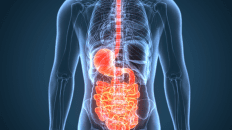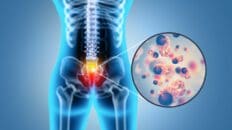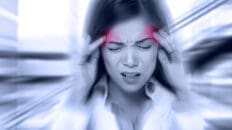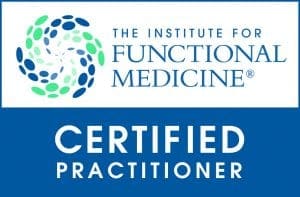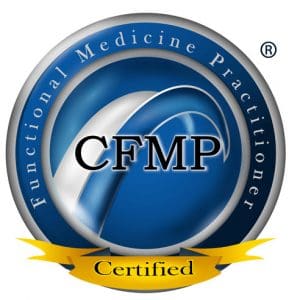Discover helpful tips and resources for navigating an auto accident to reduce WAD. Ensure you are prepared and informed.
Table of Contents
Whiplash-Associated Disorders and Cervical Spine Injuries from Motor Vehicle Accidents: A Comprehensive Guide
Welcome to our deep dive into the world of whiplash-associated disorders (WAD) and cervical spine injuries caused by motor vehicle accidents (MVAs). If you’ve ever wondered why a fender-bender can leave you feeling like you’ve been on a roller coaster gone wrong, you’re in the right place. We’ll explore the clinical reasons behind these injuries, how they develop, and what you can do to recover, while sprinkling in a bit of humor to keep things light. Buckle up (safely, of course), because this is going to be a wild ride through the science of whiplash, with insights from Dr. Alexander Jimenez, a renowned chiropractor in El Paso, Texas, who’s got your back—literally.
What Are Whiplash-Associated Disorders (WAD)?
Let’s start with the basics. Whiplash-associated disorders (WAD) are a collection of symptoms that occur after the neck experiences a sudden, forceful movement, typically from a motor vehicle accident. Picture your head snapping back and forth like a bobblehead doll when someone rear-ends your car. That rapid motion, known as a cervical acceleration-deceleration (CAD) injury, can wreak havoc on the soft tissues, muscles, ligaments, and joints of your cervical spine (the neck region of your spine).
WAD is classified into grades by the Quebec Task Force, which sounds like a fancy Canadian superhero team but is a group of experts who standardized the classification of whiplash injuries:
- Grade 0: No symptoms at all. You’re Superman post-accident.
- Grade 1: Neck pain, stiffness, or tenderness, but no physical signs on exam. You’re sore, but the doctor can’t see anything obvious.
- Grade 2: Neck pain with physical signs like reduced range of motion or tenderness. Now the doctor’s nodding, “Yup, something’s up.”
- Grade 3: Neck pain with neurological symptoms like numbness, weakness, or sensory deficits. Things are getting serious.
- Grade 4: Neck pain with a fracture or dislocation. This is the “call an ambulance” level.
Most people with WAD fall into Grades 1 or 2, which means they’re dealing with pain and stiffness but no major structural damage. However, about 50% of WAD patients experience symptoms for months or even years, which is why understanding the clinical rationale behind these injuries is so important (Spitzer et al., 1995).
References
Spitzer, W. O., Skovron, M. L., Salmi, L. R., Cassidy, J. D., Duranceau, J., Suissa, S., & Zeiss, E. (1995). Scientific monograph of the Quebec Task Force on Whiplash-Associated Disorders: Redefining “whiplash” and its management. Spine, 20(8S), 1S–73S.
Why Does the Cervical Spine Hate Car Crashes?
The cervical spine is a marvel of engineering—seven vertebrae (C1–C7) stacked like delicate building blocks, cushioned by intervertebral discs and held together by ligaments and muscles. It’s flexible enough to let you turn your head to check your blind spot, but sturdy enough to support your noggin. However, it’s not built for the sudden, high-energy forces of a car crash.
When a vehicle is rear-ended, the occupant’s torso is thrust forward by the seat, but the head lags behind due to inertia, creating a whipping motion. This results in an S-shaped curve in the cervical spine, where the lower vertebrae (C5–C6) hyperextend while the upper vertebrae (C1–C2) flex forward. It’s like your neck is trying to do the wave at a sports game, but instead of cheering, it’s screaming in protest (Bogduk & Yoganandan, 2001).
This abnormal motion can damage:
- Muscles and tendons: Strains in the sternocleidomastoid or trapezius muscles, which are like the neck’s overworked gym buddies.
- Ligaments: Sprains in the anterior longitudinal ligament or alar ligament, which act like the spine’s seatbelts.
- Facet joints: Compression or buckling, causing pain that feels like a permanent crick in your neck.
- Discs: Potential herniation, though less common in WAD.
- Nerves: Irritation or compression, leading to symptoms like arm pain or numbness.
The lower cervical spine (C5–C6) is particularly vulnerable because it experiences the most significant extension during the crash. Studies using crash dummies and cadavers (yes, science gets grim) show that this region undergoes forces beyond its normal range, leading to soft tissue injuries that are hard to spot on standard X-rays (Kaneoka et al., 2002).
Dr. Alexander Jimenez, a chiropractor and personal injury expert in El Paso, explains that these injuries often go undetected initially because standard imaging like X-rays or CT scans may not show soft tissue damage. That’s where his expertise in advanced imaging and diagnostic evaluations comes in, but we’ll get to that later. For now, know that the cervical spine’s delicate balance is easily disrupted by the chaos of an MVA, setting the stage for WAD.
References
Bogduk, N., & Yoganandan, N. (2001). Biomechanical basis of whiplash injuries. Accident Analysis & Prevention, 33(5), 197–205.
Kaneoka, K., Ono, K., Inami, S., & Hayashi, K. (2002). The human cervical spine motion during rear impact collisions: A proposed cervical facet injury during whiplash trauma. Journal of Whiplash Related Disorders, 1(1), 85–97.
How WAD Develops After an Auto Injury
So, you’ve been rear-ended, and your neck feels like it’s auditioning for a horror movie. What’s happening inside your body to cause WAD? The development of WAD is a complex interplay of physical, psychological, and neurological factors. Let’s break it down.
Physical Damage
The initial injury from the S-shaped cervical motion causes microtears in muscles, ligaments, and joint capsules. These tissues become inflamed, leading to pain, stiffness, and reduced range of motion. The facet joints, which connect the vertebrae, are particularly prone to injury, and their irritation can cause persistent pain that radiates to the shoulders or upper back (Schofferman et al., 2015).
Neurological and Sensory Changes
WAD isn’t just about sore muscles. The rapid motion can disrupt the nervous system, leading to symptoms like headaches, dizziness, or even visual disturbances. For example, a study found that some WAD patients develop accommodative spasm, where the eye muscles over-contract, causing blurred vision (Endo et al., 2006). Additionally, the cervical spine’s proprioceptive system (which tells your brain where your head is in space) can go haywire, affecting balance and coordination.
Psychological Factors
Here’s where things get tricky. The stress of an accident, combined with pain, can trigger psychological symptoms like anxiety, depression, or post-traumatic stress disorder (PTSD). These can amplify pain perception, making recovery harder. About 30% of chronic WAD patients show signs of PTSD, which can make them feel like their neck pain is a life sentence (Sterling et al., 2006).
Chronicity
While many people recover from WAD within weeks, up to 50% develop chronic symptoms. Why? Factors like severe initial pain, neurological symptoms, or pre-existing conditions (like cervical spondylosis) increase the risk. The lack of visible damage on imaging can also frustrate patients, leading to a cycle of pain and emotional distress (Sterling, 2004).
Dr. Jimenez notes that chronic WAD often stems from untreated or poorly managed acute injuries. In his practice, he sees patients who were told to “just rest” but ended up with lingering pain because the underlying issues weren’t addressed. His approach, which we’ll explore later, focuses on catching these problems early with advanced diagnostics.
References
Endo, K., Ichimaru, K., Komagata, M., & Yamamoto, K. (2006). Cervical vertigo and dizziness after whiplash injury. European Spine Journal, 15(6), 886–890.
Schofferman, J., Bogduk, N., & Slosar, P. (2015). Chronic whiplash and whiplash-associated disorders: An evidence-based approach. Journal of the American Academy of Orthopaedic Surgeons, 23(10), 596–606.
Sterling, M. (2004). A proposed new classification system for whiplash-associated disorders—implications for assessment and management. Manual Therapy, 9(2), 60–70.
Sterling, M., Hendriks, E. J., & Kenardy, J. (2006). Physical and psychological factors maintain long-term predictive capacity post-whiplash injury. Pain, 122(1–2), 102–108.
Impact of WAD on Individuals
Living with WAD is no walk in the park. The symptoms can affect every aspect of life, from work to relationships to your ability to binge-watch your favorite show without wincing. Here’s how WAD impacts individuals:
- Physical Limitations: Neck pain and stiffness make it hard to turn your head, drive, or even sleep comfortably. Reduced range of motion can feel like your neck is staging a sit-in.
- Neurological Symptoms: Numbness, tingling, or weakness in the arms can make simple tasks like typing or holding a coffee mug a challenge.
- Cognitive and Emotional Effects: Headaches, dizziness, and difficulty concentrating can make you feel like your brain is on vacation. Anxiety or depression can creep in, especially if recovery is slow.
- Social and Economic Costs: Chronic WAD can lead to missed work, reduced productivity, and mounting medical bills. In the U.S., whiplash-related claims cost about $8 billion annually (Freeman, 1999).
For example, imagine trying to explain to your boss why you can’t turn your head to look at a coworker during a meeting. “Sorry, Janet, my neck says no.” It’s not just physical—it’s emotionally draining and socially isolating.
Dr. Jimenez emphasizes that WAD’s impact goes beyond the physical. In his El Paso practice, he sees patients who feel dismissed by healthcare providers or insurance companies because their injuries aren’t “visible.” His role as a medical-legal liaison helps bridge this gap, ensuring patients get the care and documentation they need.
References
Freeman, M. D. (1999). A review and methodologic critique of the literature refuting whiplash syndrome. Spine, 24(1), 86–98.
The Science of Motion- Video
Treatments for WAD and Cervical Spine Injuries
Now for the good news: WAD is treatable, and with the right approach, you can get back to feeling like yourself. The key is early intervention, multimodal care, and avoiding the temptation to treat your neck like it’s made of glass. Let’s explore the evidence-based treatments, with insights from Dr. Jimenez’s practice.
1. Active Mobilization and Exercise
The old-school approach of slapping on a soft cervical collar and resting is out. Studies show that active mobilization—gentle movement and exercises—leads to faster recovery than immobilization (Schnabel et al., 2004). Think of it like coaxing your neck back to work with a gentle pep talk rather than locking it in a cage.
Dr. Jimenez recommends:
- Range-of-motion exercises: Slowly turning, tilting, and nodding your head to restore flexibility.
- Strengthening exercises: Targeting deep neck flexors and scapular stabilizers to support the cervical spine.
- Thoracic spine mobility: Since the upper back influences neck movement, keeping it limber is key.
In his clinic, patients are guided through tailored exercise programs to prevent stiffness and promote healing. “Movement is medicine,” he says, and he’s not wrong—studies show that patients who stay active recover faster (Peeters et al., 2001).
2. Manual Therapy
Chiropractic adjustments, mobilization, and soft tissue therapy can work wonders for WAD. A 2016 clinical practice guideline found that cervical spine manipulation combined with soft tissue therapy reduces pain and disability in Grades I–II WAD (Bussieres et al., 2016).
Dr. Jimenez uses high-velocity, low-amplitude adjustments to restore joint function and relieve pain. He also incorporates myofascial release to address trigger points in muscles like the trapezius. Patients often report feeling like their neck has been “unlocked” after a session, kind of like popping the hood of a car and fixing the engine.
3. Pain Management
For acute pain, simple analgesics like acetaminophen or NSAIDs (e.g., ibuprofen) can help. In severe cases, short-term muscle relaxants may be prescribed. However, Dr. Jimenez cautions against over-relying on medication, as it only masks symptoms. Instead, he focuses on addressing the root cause through chiropractic care and rehabilitation.
For chronic WAD, treatments such as cervical radiofrequency neurotomy (a procedure that disables pain-causing nerves) or trigger point injections with botulinum toxin can provide relief for up to 9 months (Ronnen et al., 1996). Dr. Jimenez collaborates with pain specialists when these interventions are necessary, ensuring a multidisciplinary approach.
4. Psychological Support
Since psychological factors like PTSD or anxiety can worsen WAD, cognitive behavioral therapy (CBT) is often recommended. A multimodal approach combining CBT, physical therapy, and patient education is more effective than physical therapy alone (McClune et al., 2002). Dr. Jimenez educates his patients about the mind-body connection, helping them understand that stress can amplify pain.
5. Advanced Interventions
In rare cases, WAD involves structural damage like disc herniation or cervical instability. Here, advanced imaging (MRI or dynamic X-rays) is crucial to guide treatment. Dr. Jimenez’s expertise in diagnostic evaluations allows him to identify these issues early, preventing long-term complications. In severe cases, surgical options like cervical fusion may be considered, but these are a last resort.
Dr. Jimenez’s Approach
At his El Paso clinic, Dr. Jimenez combines these treatments into a personalized plan. His philosophy is simple: “Treat the patient, not just the injury.” He uses a multimodal approach, blending chiropractic care, exercise, and patient education to promote healing. His patients rave about his hands-on style and ability to explain complex medical concepts in plain English, like a teacher who makes science class fun.
References
Bussieres, A. E., Stewart, G., Al-Zoubi, F., Decina, P., Descarreaux, M., Hayden, J., … & Stuber, K. (2016). The treatment of neck pain–associated disorders and whiplash-associated disorders: A clinical practice guideline. Journal of Manipulative and Physiological Therapeutics, 39(8), 523–564.
McClune, T., Burton, A. K., & Waddell, G. (2002). Whiplash-associated disorders: A review of the literature to guide patient information and advice. Emergency Medicine Journal, 19(6), 499–506.
Peeters, G. G. M., Verhagen, A. P., de Bie, R. A., & Oostendorp, R. A. B. (2001). The efficacy of conservative treatment in patients with whiplash injury: A systematic review of clinical trials. Spine, 26(4), E64–E73.
Ronnen, H. R., de Korte, P. J., Brink, P. R., van der Bijl, H. J., Tonino, A. J., & Franke, C. L. (1996). Acute whiplash injury: Is there a role for MR imaging?—A prospective study of 100 patients. Radiology, 201(1), 93–100.
Schnabel, M., Ferrari, R., Vassiliou, T., & Kaluza, G. (2004). Randomised, controlled outcome study of active mobilisation compared with collar therapy for whiplash injury. Emergency Medicine Journal, 21(3), 306–310.
Recovery from WAD: What to Expect
Recovery from WAD varies depending on the severity of the injury, the patient’s overall health, and how quickly treatment begins. Here’s a rough timeline based on clinical evidence:
- Acute Phase (0–3 months): Most people with Grades I–II WAD improve significantly with active mobilization, manual therapy, and pain management. About 50% recover fully within this period (Suissa et al., 2001).
- Subacute Phase (3–6 months): Symptoms like pain or stiffness may persist but often decrease with continued therapy. Psychological support becomes crucial if recovery stalls.
- Chronic Phase (>6 months): Up to 50% of patients develop chronic WAD, with ongoing pain or disability. Multimodal care, including advanced interventions, is key to managing symptoms.
Dr. Jimenez stresses the importance of early intervention to prevent chronicity. “The sooner we address the injury, the better the outcome,” he says. His clinic uses a structured rehabilitation program that includes regular reassessments to track progress, ensuring patients don’t fall through the cracks.
Factors that improve recovery include:
- Early treatment: Starting therapy within days of the injury.
- Active participation: Following through with exercises and lifestyle changes.
- Positive mindset: Believing in recovery can make a big difference.
- Comprehensive care: Combining physical, neurological, and psychological treatments.
Conversely, factors like severe initial pain, neurological symptoms, or legal disputes can delay recovery. Speaking of legal issues, let’s talk about why personal injury cases matter in WAD.
References
Suissa, S., Harder, S., & Veilleux, M. (2001). The relation between initial symptoms and signs and the prognosis of whiplash. European Spine Journal, 10(1), 44–49.
Personal Injury Cases in El Paso: Why They Matter
In El Paso, motor vehicle accidents are a leading cause of personal injury claims, and WAD is one of the most common injuries reported. These cases are critical because they help victims access the medical care and compensation they need to recover. However, proving WAD in a legal setting can be tricky since soft tissue injuries don’t always show up on standard imaging.
This is where Dr. Alexander Jimenez shines. As a distinguished practitioner in El Paso, he’s known for his ability to bridge the gap between medical care and legal documentation. His expertise in personal injury cases makes him a go-to resource for victims of MVAs. Here’s how he does it:
Advanced Imaging and Diagnostics
Dr. Jimenez uses cutting-edge imaging like MRI and dynamic X-rays to detect soft tissue injuries, cervical instability, or subtle disc issues that standard X-rays miss. For example, an MRI can reveal prevertebral edema or ligamentous injury, which are common in WAD but often overlooked (Ronnen et al., 1996). His diagnostic evaluations provide objective evidence that strengthens personal injury claims.
Dual-Scope Procedures
Dr. Jimenez employs dual-scope procedures, combining clinical assessments with biomechanical analyses to pinpoint the exact mechanism of injury. By reconstructing how the accident caused the cervical spine to deform, he provides a clear link between the MVA and the patient’s symptoms. This is crucial for legal cases, as it establishes causation—a key element in personal injury law.
Medical-Legal Liaison
As a liaison between the medical and legal worlds, Dr. Jimenez ensures that his patients’ injuries are thoroughly documented. He provides detailed reports that explain the clinical rationale for WAD, including the biomechanics of the injury, diagnostic findings, and treatment plans. These reports are gold for attorneys, as they help prove the extent of the injury and the need for ongoing care. His work has earned him a reputation as a trusted advocate for MVA victims in El Paso.
Why El Paso?
El Paso’s busy roads and proximity to the border make MVAs a common occurrence. Personal injury cases here often involve complex insurance disputes, especially when injuries like WAD are “invisible” on standard tests. Dr. Jimenez’s ability to provide objective evidence and expert testimony gives his patients an edge, ensuring they’re not shortchanged by insurance companies looking to minimize payouts.
Plus, let’s be real: Dr. Jimenez is kind of a rock star in El Paso’s medical community. His patients describe him as compassionate, thorough, and a bit like a detective who won’t rest until he’s solved the case of their pain. If you’re dealing with WAD in El Paso, he’s the guy you want in your corner.
References
Ronnen, H. R., de Korte, P. J., Brink, P. R., van der Bijl, H. J., Tonino, A. J., & Franke, C. L. (1996). Acute whiplash injury: Is there a role for MR imaging?—A prospective study of 100 patients. Radiology, 201(1), 93–100.
Dr. Alexander Jimenez: A Closer Look
Let’s zoom in on Dr. Alexander Jimenez, DC, APRN, FNP-BC, because he’s not your average chiropractor. With a background in chiropractic care, advanced practice nursing, and functional medicine, he brings a unique perspective to WAD treatment. His credentials are like a superhero’s utility belt—packed with tools to tackle even the toughest cases.
- Education and Training: Dr. Jimenez holds a Doctor of Chiropractic degree and is a board-certified Family Nurse Practitioner. His training allows him to blend hands-on chiropractic techniques with medical diagnostics and holistic care.
- Practice: At his El Paso clinic, he treats a wide range of conditions, but WAD and personal injury cases are his specialty. His website, HealthVoice360, is a treasure trove of resources on chiropractic care and injury recovery.
- Philosophy: Dr. Jimenez believes in empowering patients through education. He takes the time to explain the “why” behind their injuries, making them active partners in their recovery.
- Community Impact: In El Paso, he’s a trusted figure for MVA victims, working closely with attorneys, insurance companies, and other healthcare providers to ensure comprehensive care.
On his LinkedIn profile, Dr. Jimenez describes himself as a “healthcare innovator” who combines science, compassion, and advocacy. Patients say he’s like a coach, cheerleader, and doctor rolled into one, minus the pom-poms, but with plenty of enthusiasm.
Preventing Further Cervical Spine Damage
Once you’ve got WAD, the last thing you want is to make it worse. Preventing further cervical spine damage is all about smart choices and proactive care. Here’s how to keep your neck happy:
- Avoid Prolonged Immobilization: Soft collars are tempting, but they can weaken muscles and delay recovery. Use them sparingly, if at all, and focus on gentle movement (Schnabel et al., 2004).
- Practice Good Posture: Slouching at your desk or hunching over your phone is like giving your cervical spine a daily stress test. Keep your head aligned with your spine, and consider ergonomic adjustments at work.
- Strengthen Supporting Muscles: Exercises for the neck, shoulders, and upper back build a strong foundation, reducing strain on the cervical spine.
- Manage Stress: Stress tightens muscles, which can worsen neck pain. Try relaxation techniques like deep breathing or yoga to keep tension at bay.
- Follow Medical Advice: Stick to your treatment plan, whether it’s chiropractic adjustments, physical therapy, or follow-up imaging. Ignoring symptoms is like ignoring a “check engine” light—it won’t end well.
Dr. Jimenez’s clinic emphasizes prevention through education. He teaches patients how to modify daily activities, like adjusting their car seat’s headrest to reduce whiplash risk in future accidents. His team also provides ergonomic assessments to ensure workplaces and home setups support spinal health.
References
Schnabel, M., Ferrari, R., Vassiliou, T., & Kaluza, G. (2004). Randomised, controlled outcome study of active mobilisation compared with collar therapy for whiplash injury. Emergency Medicine Journal, 21(3), 306–310.
A Touch of Humor: Surviving WAD with a Smile
Let’s lighten the mood with a bit of humor, because dealing with WAD can feel like starring in a slapstick comedy where your neck is the punchline. Here are some tongue-in-cheek tips for surviving whiplash life:
- Rename Your Neck: Call it “Sir Stiffy” to make it feel like a noble, if grumpy, companion.
- Befriend Your Heating Pad: It’s your new BFF, always warm and ready to cuddle.
- Master the Side-Eye: Since turning your head is a no-go, perfect that sassy glance to communicate everything from “I’m fine” to “Please stop talking.”
- Channel Your Inner Turtle: Slow and steady wins the race. No sudden movements, just smooth, deliberate motions.
In all seriousness, humor can be a coping mechanism, but don’t let it distract from seeking proper care. Dr. Jimenez often uses lighthearted analogies to make patients feel at ease, like comparing the cervical spine to a “fussy suspension system” that needs regular tune-ups.
Conclusion: A Serious Note
Whiplash-associated disorders and cervical spine injuries from motor vehicle accidents are no laughing matter. The rapid, forceful motion of a crash can cause significant damage to the neck’s muscles, ligaments, joints, and nerves, leading to a range of symptoms that impact physical, neurological, and emotional well-being. Early intervention, multimodal treatment, and expert care—like that provided by Dr. Alexander Jimenez in El Paso—are critical to preventing chronic pain and disability.
Dr. Jimenez’s unique ability to combine advanced imaging, diagnostic evaluations, and dual-scope procedures sets him apart as a leader in personal injury care. His role as a medical-legal liaison ensures that MVA victims receive the documentation and treatment they need to recover and seek fair compensation. Whether you’re dealing with acute pain or chronic WAD, his comprehensive approach offers hope and healing.
Disclaimer: This blog post is for informational purposes only and should not be taken as medical advice. Always consult a qualified healthcare provider, such as Dr. Alexander Jimenez, for personalized diagnosis and treatment. The information provided is based on clinical evidence and expert insights, but is not a substitute for professional medical care. If you’ve been injured in a motor vehicle accident, seek immediate medical attention to address potential cervical spine injuries and prevent long-term complications.
For more information or to schedule a consultation with Dr. Jimenez, visit HealthVoice360 or contact his El Paso clinic. Your neck deserves the best care—don’t wait to start your recovery journey.
General Disclaimer
Professional Scope of Practice *
The information herein on "WAD: What to Do After an Auto Accident" is not intended to replace a one-on-one relationship with a qualified health care professional or licensed physician and is not medical advice. We encourage you to make healthcare decisions based on your research and partnership with a qualified healthcare professional.
Blog Information & Scope Discussions
Welcome to El Paso's Premier Wellness and Injury Care Clinic & Wellness Blog, where Dr. Alex Jimenez, DC, FNP-C, a Multi-State board-certified Family Practice Nurse Practitioner (FNP-BC) and Chiropractor (DC), presents insights on how our multidisciplinary team is dedicated to holistic healing and personalized care. Our practice aligns with evidence-based treatment protocols inspired by integrative medicine principles, similar to those found on this site and our family practice-based chiromed.com site, focusing on restoring health naturally for patients of all ages.
Our areas of multidisciplinary practice include Wellness & Nutrition, Chronic Pain, Personal Injury, Auto Accident Care, Work Injuries, Back Injury, Low Back Pain, Neck Pain, Migraine Headaches, Sports Injuries, Severe Sciatica, Scoliosis, Complex Herniated Discs, Fibromyalgia, Chronic Pain, Complex Injuries, Stress Management, Functional Medicine Treatments, and in-scope care protocols.
Our information scope is multidisciplinary, focusing on musculoskeletal and physical medicine, wellness, contributing etiological viscerosomatic disturbances within clinical presentations, associated somato-visceral reflex clinical dynamics, subluxation complexes, sensitive health issues, and functional medicine articles, topics, and discussions.
We provide and present clinical collaboration with specialists from various disciplines. Each specialist is governed by their professional scope of practice and their jurisdiction of licensure. We use functional health & wellness protocols to treat and support care for musculoskeletal injuries or disorders.
Our videos, posts, topics, and insights address clinical matters and issues that are directly or indirectly related to our clinical scope of practice.
Our office has made a reasonable effort to provide supportive citations and has identified relevant research studies that support our posts. We provide copies of supporting research studies upon request to regulatory boards and the public.
We understand that we cover matters that require an additional explanation of how they may assist in a particular care plan or treatment protocol; therefore, to discuss the subject matter above further, please feel free to ask Dr. Alex Jimenez, DC, APRN, FNP-BC, or contact us at 915-850-0900.
We are here to help you and your family.
Blessings
Dr. Alex Jimenez DC, MSACP, APRN, FNP-BC*, CCST, IFMCP, CFMP, ATN
email: coach@elpasofunctionalmedicine.com
Multidisciplinary Licensing & Board Certifications:
Licensed as a Doctor of Chiropractic (DC) in Texas & New Mexico*
Texas DC License #: TX5807, Verified: TX5807
New Mexico DC License #: NM-DC2182, Verified: NM-DC2182
Multi-State Advanced Practice Registered Nurse (APRN*) in Texas & Multistate
Multistate Compact RN License by Endorsement (42 States)
Texas APRN License #: 1191402, Verified: 1191402 *
Florida APRN License #: 11043890, Verified: APRN11043890 *
* Prescriptive Authority Authorized
ANCC FNP-BC: Board Certified Nurse Practitioner*
Compact Status: Multi-State License: Authorized to Practice in 40 States*
Graduate with Honors: ICHS: MSN-FNP (Family Nurse Practitioner Program)
Degree Granted. Master's in Family Practice MSN Diploma (Cum Laude)
Dr. Alex Jimenez, DC, APRN, FNP-BC*, CFMP, IFMCP, ATN, CCST
My Digital Business Card
RN: Registered Nurse
APRNP: Advanced Practice Registered Nurse
FNP: Family Practice Specialization
DC: Doctor of Chiropractic
CFMP: Certified Functional Medicine Provider
MSN-FNP: Master of Science in Family Practice Medicine
MSACP: Master of Science in Advanced Clinical Practice
IFMCP: Institute of Functional Medicine
CCST: Certified Chiropractic Spinal Trauma
ATN: Advanced Translational Neutrogenomics







